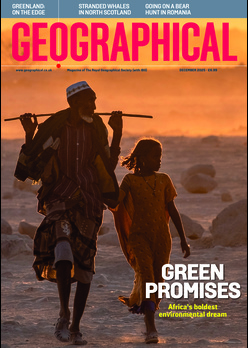
Jerry Brotton’s new book uncovers the ways in which seemingly simple coordinates shape the way we perceive our world, cultures and politics
By
The original iconic photograph of the Earth taken from Apollo 17 in 1972 had Antarctica at the top. That NASA decided to flip the image is one of the many remarkable facts that you discover in this marvellous examination of how we orientate ourselves and how that affects how we see the world.
As Jeremy Brotton so elegantly explains, north, south, east and west are far more than points on a map, or a direction of travel. They embody our complex and often contradictory understanding of the world, with profound cultural, political and social implications.

Our use of these arbitrary terms and the meanings we give them reflect how we see the world and our place within it. Why does the term Global South carry a pejorative colonial slight? Why do we describe people who live in Europe and North America as Westerners?
Enjoying this article? Check out our related reads:
How come we now survey planets millions of miles away and organise the resulting maps with north as the prime cardinal direction?
This short volume (160 pages of text followed by extensive notes) takes you through the history of direction from the rising of the sun and common winds being the primary definers in ancient civilisations, to the arrival of the magnetic compass and the spread of global trade, leading to European-dominated imperialism. It finishes with today’s digital world and us as a blue dot becoming the central focus of our understanding of our place on the planet.
It’s a fascinating and revealing journey showing the many twists and turns of how we have used these key concepts of direction and place.
Implicit in their use are often some deep and disturbing prejudices. At other times, rather mundane practical reasons come to the fore, such as early vellum maps used the shape of the calf skins to place the Mediterranean on an west/east axis. It’s fairly obvious why NASA decided to place North America on top.




